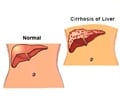Researchers at Washington University School of Medicine in St. Louis have found a link between clinical diagnosis of alcohol dependence in young adults and having a high number of sex partners.
Researchers at Washington University School of Medicine in St. Louis have found a link between clinical diagnosis of alcohol dependence in young adults and having a high number of sex partners.
They also found links between conduct disorder diagnosis and high numbers of sexual partners as well as between problem drinking and more partners. However, of the three, alcohol dependence had the most influence on number of sex partners."Some participants in the study reported 50 or 100 partners, and research shows — and common sense tells you — that the more sex partners you have, the more likely you'll encounter someone with an STD. Chances also increase for unintended pregnancies and other health complications," said first author Patricia Cavazos-Rehg, Ph.D., research instructor in the Department of Psychiatry.
Of those in this study who were alcohol dependent, 45 percent reported having 10 or more sexual partners. In addition, 37 percent of those with a conduct disorder diagnosis had at least 10 partners. The study focused specifically on the number of partners, and it defines high risk using a larger number than typically seen in the psychiatric literature.
"To my knowledge, most research in young adults has used a standard of 'up to six' sex partners when examining risk. But the average number of partners for the people in this study was 9.26, so instead of using 'six or more' partners as our standard for high risk, we increased that number to 10," Cavazos-Rehg said.
Researchers gathered data through personal interviews with 601 people between 18 and 25 years old. All were unmarried and related to alcohol-dependent individuals who participated in the national Collaborative Study on the Genetics of Alcoholism (COGA), an ongoing project involving interviews and DNA samples from more than 10,000 people.
The COGA database includes individuals from inpatient and outpatient alcohol treatment centers and their families. Families in the COGA study usually have multiple members with alcohol dependence.
"We categorized these subjects according to three levels of alcohol involvement — non-dependent, problem drinking and alcohol dependent — and demonstrated how a stepwise increase from non-dependence to problematic alcohol use to alcohol dependence is associated with a higher number of sexual partners," Cavazos-Rehg said.
"We found that 22 percent of the non-dependent people had 10 or more partners, compared to 31 percent of problem drinkers and 45 percent of those who were alcohol dependent. We also found a risk for a high number of sexual partners among those with conduct disorder, independent of their level of alcohol involvement. And those with both alcohol dependence and conduct disorder were at greatest risk of having a high number of sex partners," she added.
"Perhaps clinicians can work together to treat both problems. A better understanding of alcohol dependence and conduct disorder could become part of a comprehensive strategy for reducing the transmission of STDs and unintended pregnancies," she said.
The study is published in the December issue of the journal Alcoholism: Clinical & Experimental Research.
Source-ANI
LIN/P









